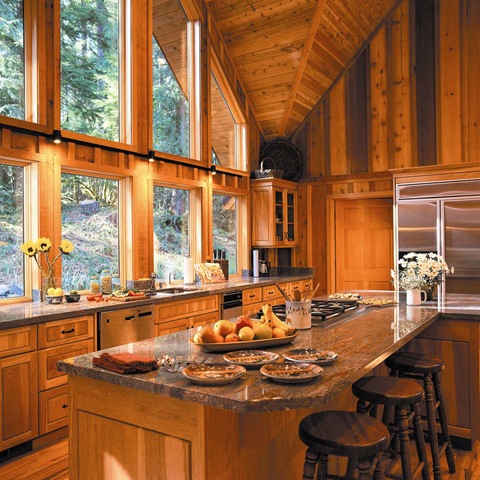 I typically don’t talk much about energy efficiency. Living in an apartment, unless you can negotiate with the property management about your appliances, you typically have to take what you’ve got.
I typically don’t talk much about energy efficiency. Living in an apartment, unless you can negotiate with the property management about your appliances, you typically have to take what you’ve got.
This means that the options to living more energy efficient are limited.
Now there are some cheap methods you can use to reduce how much energy you use. You’ve probably heard of them, but one of the most cost effective methods I’ve seen is weather stripping. It quite literally pays for itself in a hurry. Only about $3 worth of weather stripping can save you more than that on your energy bill, especially in the winter.
For example, I weather stripped our front door (which leads into a hallway) until it seals like a door to the space shuttle, and that alone dropped about $5 off our first energy bill for our heating system. For the apartment in which I previously lived, which had a natural gas heating system, weather stripping alone on our front door and windows cut our natural gas usage in half compared to previous years.
But what about the summer?
Shortly after moving into our current apartment, my fiancée and I purchased thermal curtains. You know the kind, heavy curtains that are all white on one side that are supposedly able to keep a room cooler than normal curtains? I’ve had mine up for a year and, let me tell you, they don’t do squat when you’re in an apartment on the top floor of an apartment building with bedroom windows facing due west.
The master bedroom and second bedroom (office) in my apartment are always ovens in the afternoon and early evening. And because the living room is shaded and on the east side of the apartment building, our living room ends up freezing cold, partly because of the weather stripped front door, but mainly because our air conditioner is working harder trying to make up for the hotter bedrooms in the afternoon.
There is one simple reason the thermal curtains weren’t doing squat: they can’t stop the heat from getting into the room in the first place. So I started looking around and came across discussions of window films. You can find it at your local Lowe’s or Home Depot. Do they work?
You need to install the window film to a cool window, so for us, we installed the film on Tuesday night into early Wednesday morning, July 13th and 14th. Again, west facing window, so it was either be up late or get up early to do this. We also only did one room, the master bedroom since it has the larger window of the two and the window was easier to access without having to move furniture.
Now one thing about the films they don’t mention, partly because it may not apply to you, is that for the first day after installing the film you may notice a difference in the way the room feels, but you might not notice a difference in your energy usage. But over time after the film cures, you should start noticing a difference, partly because the change in how the room feels will allow you to turn your A/C down to keep your home or apartment from feeling like a freezer.
So what kind of results have I seen? Well again, I’ve only filmed up one window, but the other will be taken care of soon. Now where I live we actually have a power meter on our HVAC system separate from the main power to the apartment. This makes gauging which methods work and which don’t a little easier. Plus our power company has meters that allow for daily tracking of power usage.
Now remember it was in the early morning of July 14th that we installed the film, and Thursday evening (July 15th) at about 8pm (after I got home from work) — or was it last night (July 16th)? — I turned the thermostat to a higher temperature. As you can see with this screenshot from my power company’s web site, the changes are dramatic:

Wednesday was also the peak energy usage day for the month of July on kWh. I estimate that the film for both windows will have paid for itself by the end of September. Isn’t it great so see some real numbers?
 Okay so you must now be wondering: which film did we get? Gila Heat Control Platinum. You can find it at your local Lowe’s home improvement store. You can also read more about it on Gila’s web site. Home Depot sells something similar, I believe. If you have a large home, you can also have 3M come out to your house and do a professional installation of their window film products — but you can expect that to be expensive, but probably worth it in the long run.
Okay so you must now be wondering: which film did we get? Gila Heat Control Platinum. You can find it at your local Lowe’s home improvement store. You can also read more about it on Gila’s web site. Home Depot sells something similar, I believe. If you have a large home, you can also have 3M come out to your house and do a professional installation of their window film products — but you can expect that to be expensive, but probably worth it in the long run.
The film itself will run you about $25 for the smallest roll, which gives you 30 square feet. The 45 square foot roll is only $30, though, so the bigger the window the better the value, but don’t buy a larger roll than you need, but do try to account for multiple windows when buying the film.
Now if you do buy this film, there is a kit that you can buy as well. Get it. It’s only $10 and it comes with several things that make installation of this a lot easier. Plus the installation instructions refer to what is in the kit multiple times. The kit comes with a solution to be sprayed on the film and the window during installation. That bottle should be enough for a 40 square foot window, so if you’re doing multiple windows, pick up a couple bottles (they’re only about $4 each).
And if you’re doing windows that are divided into multiple small panes (our master bedroom window is 24 small panes approximately 11″ x 12″ each), be prepared to spend several hours doing just that one window.
In the kit is a small cutter as well — use it to only cut the film from the roll. To cut off the excess film after you get it on the window (watch the installation videos for details), go to Office Depot or OfficeMax and spend about $5 and get an X-acto knife. Trust me, it makes cutting that film much easier.
Links
Image copyrights
- Wind farm image copyright © 2008 by Hans Hillewaert. Licensed under Creative Commons Attribution-Share Alike 3.0 Unported license.
- Kitchen picture copyright © 2008 Solutia, Inc. Obtained from press kit on GilaFilms.com.
You must be logged in to post a comment.